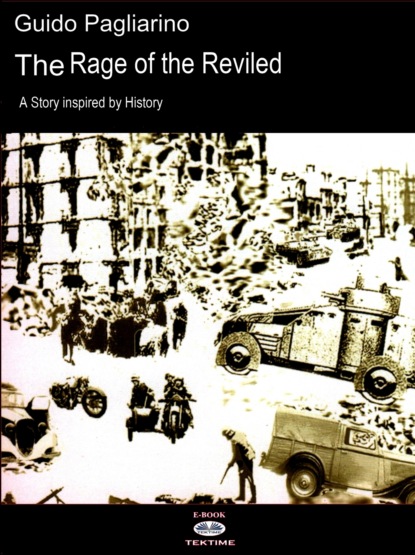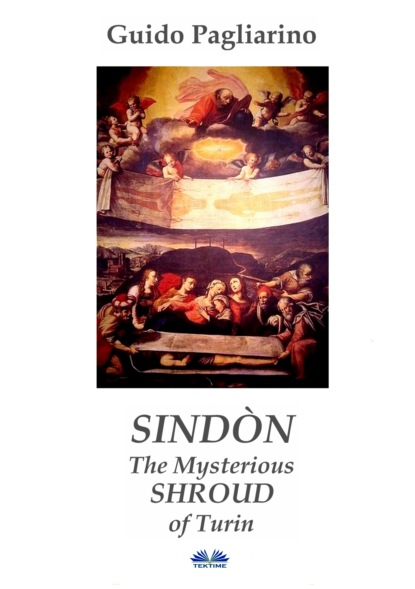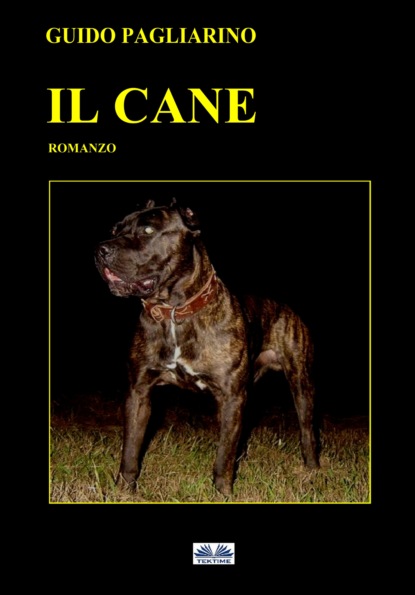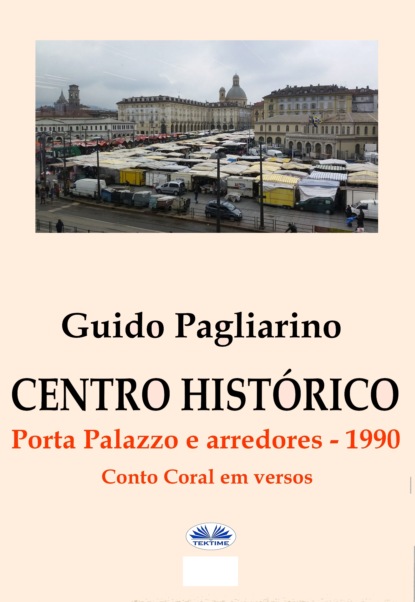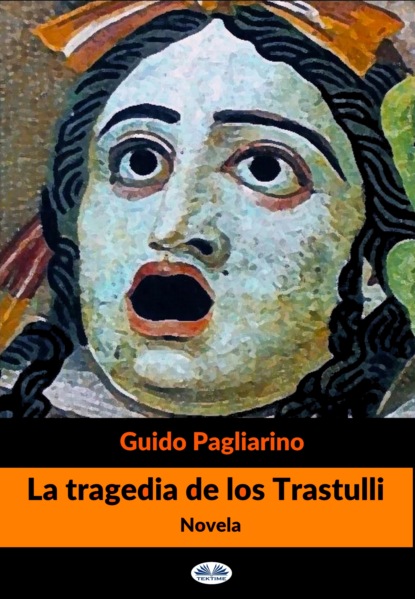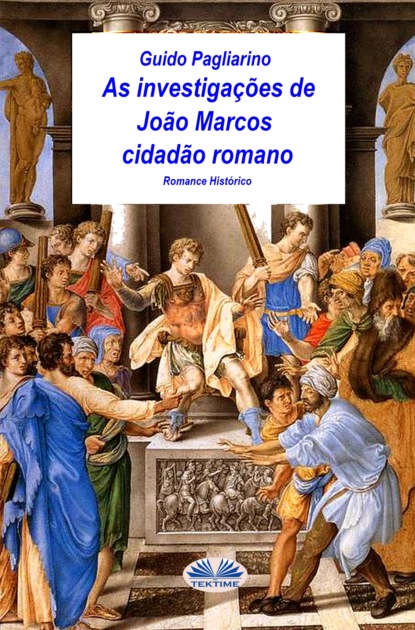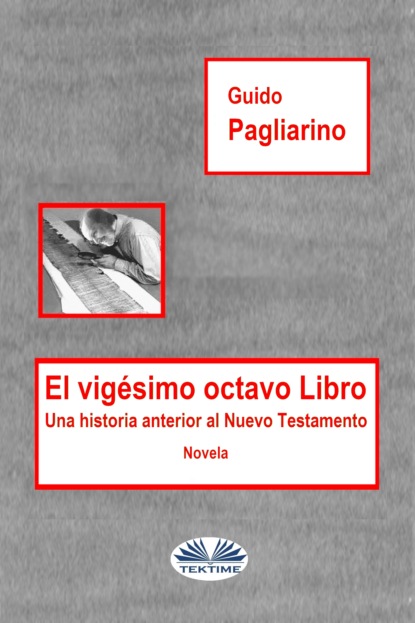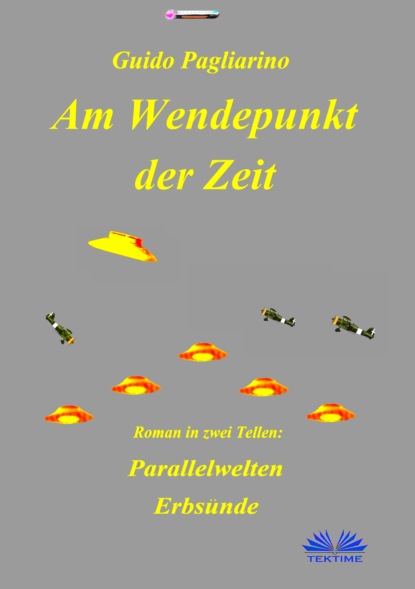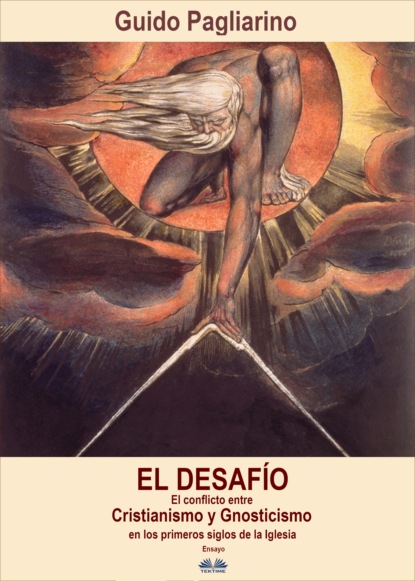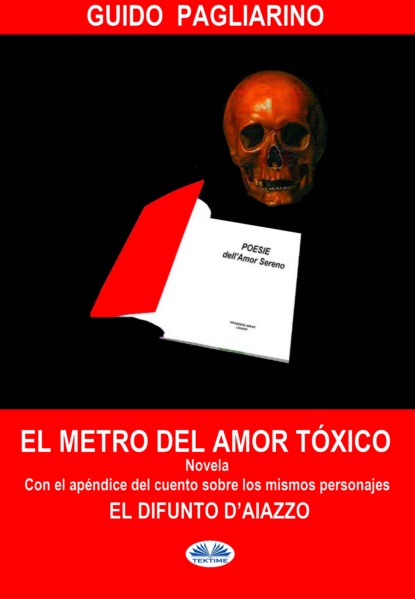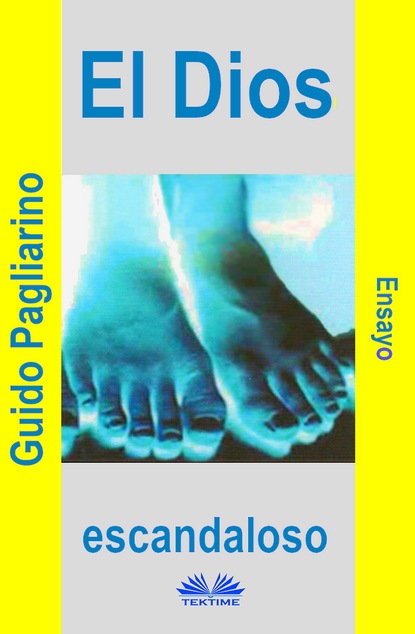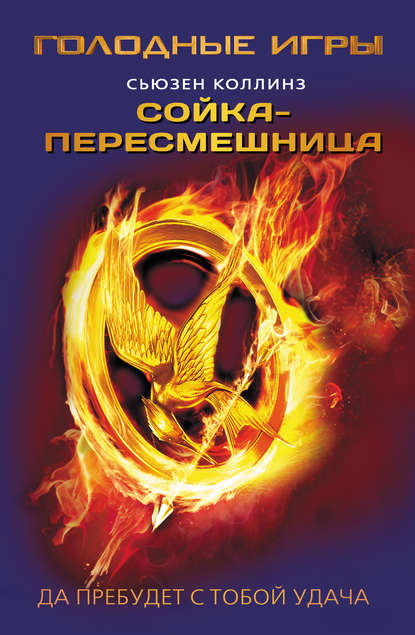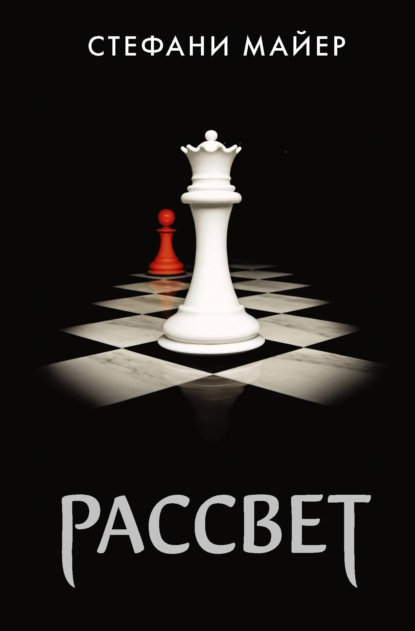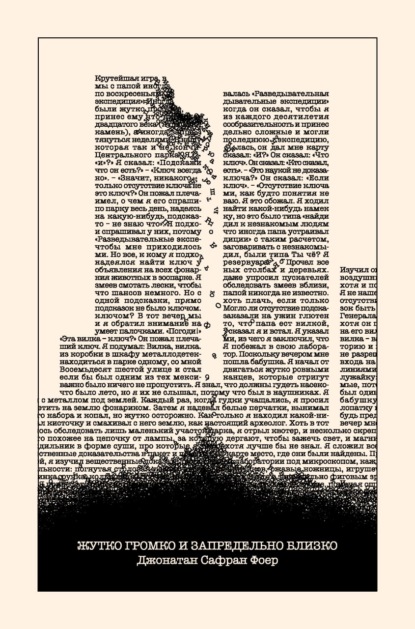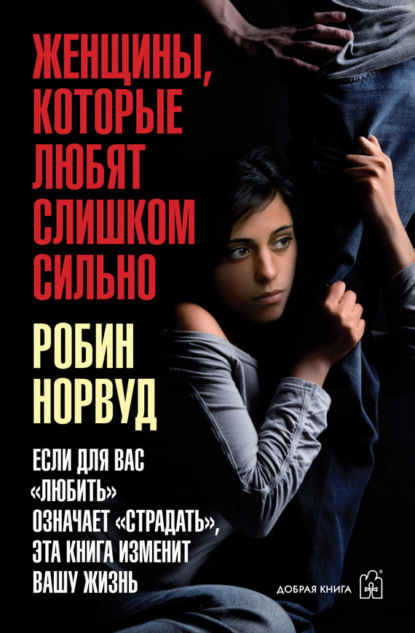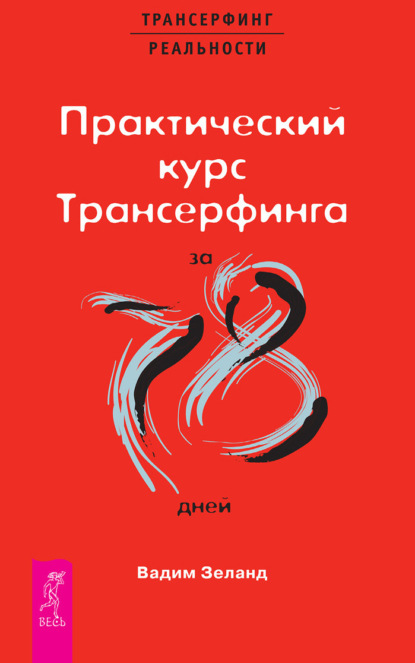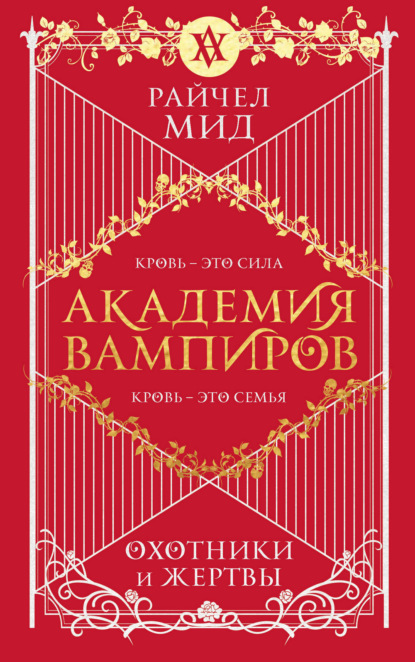Поиск:
Войти
Книги автора: Guido Pagliarino
Сортировка
- сначала новые
- сначала новые
- по рейтингу
- по просмотрам
- по названию
В году 1530 Паоло Грилланди, папский судья, председатель мирского суда в Риме, ведет дознание об одн…
В году 1530 Паоло Грилланди, папский судья, председатель мирского суда в Риме, ведет дознание об одном туманном убийстве и гнусном похищении; по ходу следствия ему удается пролить свет на грязные делишки некоторых высокопоставленных особ, которые пристрастились к сатанизму, убийствам и самым зверским половым сношениям, и восстановить наконец справедливость, но и сам он порядком обжигается. Грязных негодяев, которые совершили не одно лишь, а целый ряд преступлений, по статьям закона тех времен он приговорит к смерти на костре, но все же долгим, опасным и не лишенным покушений на его жизнь окажется путь, который магистрату придется пройти, чтобы отыскать доказательства по делу. В то же время, благодаря личному опыту и некоторым встречам, происходит его обращение из безжалостного преследователя ведьм в человека, охваченного сомнениями и состраданием. В обстановке охоты на ведьм в эпоху Возрождения читатель, среди прочих эффектных сцен, столкнется с поединком на мечах с самим чертом. В году 1530 Паоло Грилланди, папский судья, председатель мирского суда в Риме, ведет дознание об одном туманном убийстве и гнусном похищении; по ходу следствия ему удается пролить свет на грязные делишки некоторых высокопоставленных особ, которые пристрастились к сатанизму, убийствам и самым зверским половым сношениям, и восстановить наконец справедливость, но и сам он порядком обжигается. Грязных негодяев, которые совершили не одно лишь, а целый ряд преступлений, по статьям закона тех времен он приговорит к смерти на костре, но все же долгим, опасным и не лишенным покушений на его жизнь окажется путь, который магистрату придется пройти, чтобы отыскать доказательства по делу. В то же время происходит его обращение из безжалостного преследователя ведьм в человека, охваченного сомнениями и состраданием, благодаря личному опыту и некоторым встречам, а в первую очередь благодаря молодому, высокообразованному епископу Микели, который в числе немногих священнослужителей в те времена борется с фанатизмом во имя любвеобильного Божьего благоразумия. В обстановке охоты на ведьм в эпоху Возрождения, помимо различных неожиданных поворотов событий вплоть до последних страниц, читатель, среди прочих эффектных сцен сюжета, столкнется с поединком на мечах с самим чертом, разграблением Рима, встретится с философами и магами-гностиками, рабами, разбойниками, святыми и бесноватыми в Италии, где уже близится Тридентский собор, стране, отличной от современной, и все же в какой-то мере похожей. Задействованы в этом романе историческом, но с детективным разворотом, величайшие персонажи вошедшие в большую Историю, а также персонажи менее известные, такие как адвокат Понцинибио, который выступал против жестокостей, применяемых как католической инквизицией, так и в протестантских религиозных судах, и личность которого намного предваряет личности таких противников смертной казни, как Беккария; вошли в роман и такие реальные персонажи, как бесноватый Балестрини, и наводящий ужас инквизитор доминиканец Спина. Да и сам главный герой Грилланди является исторической личностью, хотя на самом деле речь шла о фанатичном адвокате, преследователе ведьм, а не о папском судье. В числе вымышленных персонажей встречаем Мору, юную и покорную любовницу судьи, которая хранит страшные, будоражащие душу тайны, она не второстепенная героиня, поскольку именно она полностью раскрывать магистрату дело. Помимо нее также вымышленными персонажами являются двуличный кавалер Ринальди и приспешник ада князь Бьянкакроче, образ которого остается на втором плане и ни разу не выходит на первый план, как подобает великим кукловодам: это своего рода незримый главарь мафии, который сделал своим замом действующего в открытую Ринальди. Епископ Микели – тоже вымышленный герой, но он вобрал в себя образы высокопоставленных священнослужителей, которые существовали на самом деле: Поул, Садолето и Мороне; инквизиция обвинила их в ереси, так как они проповедовали евангельское милосердие против жестокостей инквизиторов; также вымышленными являются персонажи священника (приходского) из Гроттаферраты, наемного убийцы Тралло, фехтовальщика Фуэнтеса Виллаты, главаря разбойников и брата Мариетты, судьи Салати и лейтенанта Риссони. В романе отражается менталитет XVI века, ведь, как известно историкам, когда мы заглядываем в прошлое, надо как можно тщательнее устранить современное восприятие, иначе есть опасность вынести не исторические суждения; например, смертная казнь сегодня, как правило, считается вещью ужасной, а в XVI веке она воспринималась как наказание бесспорное, и полагали, что раскаявшийся убийца смертью искупает все свои грехи и таким образом возносится в рай; вот почему один из персонажей, епископ Микели, хотя и является он идеалистом, не достигает отрицания смертных приговоров за убийство, более того, он одобряет сожжение на костре, к которому судья Грилланди приговаривает раскрытую и арестованную сатанинскую преступную группу в конце романа.
В году 1530 Паоло Грилланди, папский судья, председатель мирского суда в Риме, ведет дознание об одн…
В году 1530 Паоло Грилланди, папский судья, председатель мирского суда в Риме, ведет дознание об одном туманном убийстве и гнусном похищении; по ходу следствия ему удается пролить свет на грязные делишки некоторых высокопоставленных особ, которые пристрастились к сатанизму, убийствам и самым зверским половым сношениям, и восстановить наконец справедливость, но и сам он порядком обжигается. Грязных негодяев, которые совершили не одно лишь, а целый ряд преступлений, по статьям закона тех времен он приговорит к смерти на костре, но все же долгим, опасным и не лишенным покушений на его жизнь окажется путь, который магистрату придется пройти, чтобы отыскать доказательства по делу. В то же время, благодаря личному опыту и некоторым встречам, происходит его обращение из безжалостного преследователя ведьм в человека, охваченного сомнениями и состраданием. В обстановке охоты на ведьм в эпоху Возрождения читатель, среди прочих эффектных сцен, столкнется с поединком на мечах с самим чертом. В году 1530 Паоло Грилланди, папский судья, председатель мирского суда в Риме, ведет дознание об одном туманном убийстве и гнусном похищении; по ходу следствия ему удается пролить свет на грязные делишки некоторых высокопоставленных особ, которые пристрастились к сатанизму, убийствам и самым зверским половым сношениям, и восстановить наконец справедливость, но и сам он порядком обжигается. Грязных негодяев, которые совершили не одно лишь, а целый ряд преступлений, по статьям закона тех времен он приговорит к смерти на костре, но все же долгим, опасным и не лишенным покушений на его жизнь окажется путь, который магистрату придется пройти, чтобы отыскать доказательства по делу. В то же время происходит его обращение из безжалостного преследователя ведьм в человека, охваченного сомнениями и состраданием, благодаря личному опыту и некоторым встречам, а в первую очередь благодаря молодому, высокообразованному епископу Микели, который в числе немногих священнослужителей в те времена борется с фанатизмом во имя любвеобильного Божьего благоразумия. В обстановке охоты на ведьм в эпоху Возрождения, помимо различных неожиданных поворотов событий вплоть до последних страниц, читатель, среди прочих эффектных сцен сюжета, столкнется с поединком на мечах с самим чертом, разграблением Рима, встретится с философами и магами-гностиками, рабами, разбойниками, святыми и бесноватыми в Италии, где уже близится Тридентский собор, стране, отличной от современной, и все же в какой-то мере похожей. Задействованы в этом романе историческом, но с детективным разворотом, величайшие персонажи вошедшие в большую Историю, а также персонажи менее известные, такие как адвокат Понцинибио, который выступал против жестокостей, применяемых как католической инквизицией, так и в протестантских религиозных судах, и личность которого намного предваряет личности таких противников смертной казни, как Беккария; вошли в роман и такие реальные персонажи, как бесноватый Балестрини, и наводящий ужас инквизитор доминиканец Спина. Да и сам главный герой Грилланди является исторической личностью, хотя на самом деле речь шла о фанатичном адвокате, преследователе ведьм, а не о папском судье. В числе вымышленных персонажей встречаем Мору, юную и покорную любовницу судьи, которая хранит страшные, будоражащие душу тайны, она не второстепенная героиня, поскольку именно она полностью раскрывать магистрату дело. Помимо нее также вымышленными персонажами являются двуличный кавалер Ринальди и приспешник ада князь Бьянкакроче, образ которого остается на втором плане и ни разу не выходит на первый план, как подобает великим кукловодам: это своего рода незримый главарь мафии, который сделал своим замом действующего в открытую Ринальди. Епископ Микели – тоже вымышленный герой, но он вобрал в себя образы высокопоставленных священнослужителей, которые существовали на самом деле: Поул, Садолето и Мороне; инквизиция обвинила их в ереси, так как они проповедовали евангельское милосердие против жестокостей инквизиторов; также вымышленными являются персонажи священника (приходского) из Гроттаферраты, наемного убийцы Тралло, фехтовальщика Фуэнтеса Виллаты, главаря разбойников и брата Мариетты, судьи Салати и лейтенанта Риссони. В романе отражается менталитет XVI века, ведь, как известно историкам, когда мы заглядываем в прошлое, надо как можно тщательнее устранить современное восприятие, иначе есть опасность вынести не исторические суждения; например, смертная казнь сегодня, как правило, считается вещью ужасной, а в XVI веке она воспринималась как наказание бесспорное, и полагали, что раскаявшийся убийца смертью искупает все свои грехи и таким образом возносится в рай; вот почему один из персонажей, епископ Микели, хотя и является он идеалистом, не достигает отрицания смертных приговоров за убийство, более того, он одобряет сожжение на костре, к которому судья Грилланди приговаривает раскрытую и арестованную сатанинскую преступную группу в конце романа.
September 26, 1943. Naples is on the verge of rebelling against the occupying Germans. Rosa, a prost…
September 26, 1943. Naples is on the verge of rebelling against the occupying Germans. Rosa, a prostitute and black marketer, a confidant of the Fascist political police, is killed violently. Her alleged murderer, Gennaro, is detained and questioned in vain by a still inexperienced deputy commissioner, Vittorio. Shortly after, the insurrection that will go down in history as The Four Days of Naples erupts. The deputy commissioner and Rosa’s alleged murderer, strangely set free by the commissioner himself, join in. Young Mariapia who has been gang raped by the German side, also takes part in the fight, yearning for revenge. Gennaro soon turns out to be related to her. Another murder takes place, and this time the target is a tobacconist who is also related to Mariapia.
Historical social fresco with crime elements set in Naples mainly in 1943, during those Four Days in which the city, by itself, got rid of the Nazi occupier. There is an abstract actor, indeed the protagonist, alongside the real-life characters, fury, both the collective wrath that erupts on the field of battle and has as its corollary, on the victorious side, rapes and other bestiality, and the anger that is expressed in the rebellion against personal abuses that go unpunished by the authority and are now unbearable.
If an oppressed people can rebel in its own right and rise up and if, as even St Thomas Aquinas admitted, murder of the tyrant is permitted when there is no other way to regain the freedom that God himself has granted the human being, is it lawful or not to kill a criminal that justice cannot reach and strike, who continues to vex, exploit and kill others inside his own neighborhood? Is someone with no other possible defense, and who resorts to extreme defense guilty? And, if so, to what extent? This is the private dilemma that runs through the novel as it traverses the public story of Naples’ rebellion against the Germans.
The scene opens on the violent death of Rosa, a wealthy prostitute and black marketer, a former confidant of the Fascist political police. Gennaro, her alleged murderer, is detained and questioned in vain by a still inexperienced deputy commissioner, Vittorio D'Aiazzo. Very soon after, on September 26, 1943, the insurrection that will go down in history as The Four Days of Naples flares up. The deputy commissioner himself and, strangely, having been freed by the chief commissioner himself, Rosa’s alleged murderer, also join it. Another participant in the battle is the young Mariapia who, having been gang raped by the Germans, yearns for revenge. At some point during the story, Gennaro turns out to be related to her.
During the clashes another murder takes place which, at least apparently, like the death of the prostitute, is not related to the revolt. The victim is a tobacconist, Mariapia's cousin, slaughtered by someone while he was defecating, and who then cut off his testicles. At a certain point the two deaths seem to be connected, because the deceased were not only both linked to the Camorra, but also to the office of American military secret services, the O.S.S. Several characters enter the scene between the various battles, such as young Mariapia’s parents, her paratrooper brother already reported missing in El Alamein but who reappears alive and very active, the willing anatomopathologist Palombella, the fat and phlegmatic warrant officer Branduardi, the valiant deputy commissioner Bollati and, a secondary but fundamental character, the elderly bike repairman Gennarino Appalle, who discovers the tobacconist’s corpse and, at the end of a clash between insurgents and German SS in the street in front of his shop, goes out onto the road and, breathless, alerts deputy commissioner D'Aiazzo who took part in the clash together with his adjutant, the impetuous Brigadier Bordin. The tobacconist had been a foul person, once a batterer for the Camorra, and
Translator: Barbara Maher
In the year 2000 the elderly emeritus police commissioner D'Aiazzo, is working alongside Commissione…
In the year 2000 the elderly emeritus police commissioner D'Aiazzo, is working alongside Commissioner Sordi, his former employee, as a consultant at the Police Headquarters in Turin. He is investigating a series of murders that seem to be the anarchic work of a sadistic serial killer or people sacrifices to the devil of one of the sulfurous sects in the macabre-obsessed Turin. But it could also or only have elements related to the brand of terrorism that had raged in Italy until about twenty years beforehand and still drags on into the end of the millennium. The monster suppresses his victims in a horrendous way, pushing the murder weapon into an ear until it reaches the brain and kills them. The investigation unfolds through disturbing suspicions, identity crises, psychological annotations, and reaches its conclusive acme in the unsettling final revelation, which has the death of the police commissioner himself, as the very consequence of his discovery of the culprit as its addendum.
In the year 2000 the elderly police commissioner emeritus Vittorio D'Aiazzo is working alongside commissioner Sordi, his former employee, as a consultant to the Turin Police Headquarters. They are investigating a series of murders that appear to be the anarchic work of a sadistic serial killer or
sacrifices to the devil by one of the sulfurous sects of macabre-obsessed Turin. But they may also, or only, have roots related to the terrorism that had raged in Italy until twenty years earlier and is still dragging on at the end of the millennium. The monster suppresses his victims horrendously by sticking the murder weapon into an ear until it reaches the brain, with lethal results. The investigation touches on private issues and moves forward through a motley group of humanity that is not entirely morally transparent. But it also touches on the political, economic, and social themes typical of the 1970s during the so-called anni di piombo (years of terrorism), when political and private violence normally ended up being mixed with the disappearance, or almost, of the concept of the person and the prevalence of social roles. Vittorio D'Aiazzo's investigation winds its way through the evil fruits of those perverse seeds, amid disturbing conjectures, identity crises, psychological annotations, and reaches its crucial acme in the unsettling final revelation which has as an addendum the death of the commissioner himself, resulting from the discovery of the culprit.
This essay divulges what the research has established about the famous Shroud of Turin, and it is no…
This essay divulges what the research has established about the famous Shroud of Turin, and it is not intended to persuade to believe that the Cloth of Turin really wrapped the body of Christ a couple of thousands year ago.
The author returns several times to certain subjects, according to different perspectives: the reader does not consider such reiterations as not necessary and involuntary: the work includes a general introductory part – at some point, considering it useful, already with in-depth studies, as for the medical conclusions of the anatomopathologist Pierluigi Baima Bollone – and a section, divided into chapters, specifically dealing with particular topics already covered in the first part, for example the photographs of the Shroud, and a chronology.
This essay has been updated several times by the author.
The essay is not intended to persuade to believe that the Sheet of Turin has really wrapped the body of Christ a couple of thousand years ago or, as commonly said, that it is authentic-
On the other hand, authenticity can also mean something else, you can say the Shroud preserved in Turin is the Cloth that wrapped body of Christ, but it could be different than simply assume that an item is two thousand years old; and if I do not take a position on the fact that this famous Sheet wrapped Jesus, I suppose that the reasons for thinking that the Shroud is very ancient are prevailing, as there are currently lots of evidence to support it and only two against, of which only one seems objectively to be considered: the radiodating tests on Shroud samples which determined the age of the Sheet at lower medieval period; but they are increasingly disputed by Christian experts, scientifically and not only. The other reason against the Shroud is a prejudice, that comes both from anticlerical laity
and from the majority of the Christians Reformed, preclusion that leads the first to ignore the theme, and sometime to mock it; and leads the Protestant believers to condemn the veneration of the Shroud, which they consider to be a mere ”symbol” created by human hands: they follow the Old Testament condemnation of ”make for yourself images”, historically born for anti-idolatrous reasons, although Catholics argue that the prohibition existed only before God was incarnated in Jesus, showing himself to the world as ”image”, that is as carnal human figure, without any possibility to be confused with graven images; there are, moreover, Catholics who deny authenticity, in the sense that the Shroud isn't precisely the one that wrapped Jesus , and you can find Protestants which assume it is authentic, at least in the second sense of the term or even in the first. In any case, it should be stressed that the Christian faith is not based on the Shroud of Turin but, historically, on the oral witness of the Apostles on Christ’s resurrection, gathered within the first century in the books of the New Testament and come down to us because it was preserved by the Church over the centuries, with systematic control of matching between the new copies and the previous ones, starting with the oldest.
With this spirit comes the second edition of the essay of Guido Pagliarino on the Shroud, , carried out considering new data and correcting a couple of inaccuracies in the book released years ago
The author returns several times to certain subjects, according to different perspectives: the reader does not consider such reiterations as not necessary and involuntary: the work includes a general introductory part – at some point, considering it useful, already with in-depth studies, as for the medical conclusions of the anatomopathologist Pierluigi Baima Bollone – and a section, divided into chapters, specifically dealing with particular topics already covered in the first part, for example the photographs of the Shroud, and a chronology.
September 26, 1943. Naples is on the verge of rebelling against the occupying Germans. Rosa, a prost…
September 26, 1943. Naples is on the verge of rebelling against the occupying Germans. Rosa, a prostitute and black marketer, a confidant of the Fascist political police, is killed violently. Her alleged murderer, Gennaro, is detained and questioned in vain by a still inexperienced deputy commissioner, Vittorio. Shortly after, the insurrection that will go down in history as The Four Days of Naples erupts. The deputy commissioner and Rosa’s alleged murderer, strangely set free by the commissioner himself, join in. Young Mariapia who has been gang raped by the German side, also takes part in the fight, yearning for revenge. Gennaro soon turns out to be related to her. Another murder takes place, and this time the target is a tobacconist who is also related to Mariapia.
Historical social fresco with crime elements set in Naples mainly in 1943, during those Four Days in which the city, by itself, got rid of the Nazi occupier. There is an abstract actor, indeed the protagonist, alongside the real-life characters, fury, both the collective wrath that erupts on the field of battle and has as its corollary, on the victorious side, rapes and other bestiality, and the anger that is expressed in the rebellion against personal abuses that go unpunished by the authority and are now unbearable.
If an oppressed people can rebel in its own right and rise up and if, as even St Thomas Aquinas admitted, murder of the tyrant is permitted when there is no other way to regain the freedom that God himself has granted the human being, is it lawful or not to kill a criminal that justice cannot reach and strike, who continues to vex, exploit and kill others inside his own neighborhood? Is someone with no other possible defense, and who resorts to extreme defense guilty? And, if so, to what extent? This is the private dilemma that runs through the novel as it traverses the public story of Naples’ rebellion against the Germans.
The scene opens on the violent death of Rosa, a wealthy prostitute and black marketer, a former confidant of the Fascist political police. Gennaro, her alleged murderer, is detained and questioned in vain by a still inexperienced deputy commissioner, Vittorio D'Aiazzo. Very soon after, on September 26, 1943, the insurrection that will go down in history as The Four Days of Naples flares up. The deputy commissioner himself and, strangely, having been freed by the chief commissioner himself, Rosa’s alleged murderer, also join it. Another participant in the battle is the young Mariapia who, having been gang raped by the Germans, yearns for revenge. At some point during the story, Gennaro turns out to be related to her.
During the clashes another murder takes place which, at least apparently, like the death of the prostitute, is not related to the revolt. The victim is a tobacconist, Mariapia's cousin, slaughtered by someone while he was defecating, and who then cut off his testicles. At a certain point the two deaths seem to be connected, because the deceased were not only both linked to the Camorra, but also to the office of American military secret services, the O.S.S. Several characters enter the scene between the various battles, such as young Mariapia’s parents, her paratrooper brother already reported missing in El Alamein but who reappears alive and very active, the willing anatomopathologist Palombella, the fat and phlegmatic warrant officer Branduardi, the valiant deputy commissioner Bollati and, a secondary but fundamental character, the elderly bike repairman Gennarino Appalle, who discovers the tobacconist’s corpse and, at the end of a clash between insurgents and German SS in the street in front of his shop, goes out onto the road and, breathless, alerts deputy commissioner D'Aiazzo who took part in the clash together with his adjutant, the impetuous Brigadier Bordin. The tobacconist had been a foul person, once a batterer for the Camorra, and
Translator: Barbara Maher
In the year 2000 the elderly emeritus police commissioner D'Aiazzo, is working alongside Commissione…
In the year 2000 the elderly emeritus police commissioner D'Aiazzo, is working alongside Commissioner Sordi, his former employee, as a consultant at the Police Headquarters in Turin. He is investigating a series of murders that seem to be the anarchic work of a sadistic serial killer or people sacrifices to the devil of one of the sulfurous sects in the macabre-obsessed Turin. But it could also or only have elements related to the brand of terrorism that had raged in Italy until about twenty years beforehand and still drags on into the end of the millennium. The monster suppresses his victims in a horrendous way, pushing the murder weapon into an ear until it reaches the brain and kills them. The investigation unfolds through disturbing suspicions, identity crises, psychological annotations, and reaches its conclusive acme in the unsettling final revelation, which has the death of the police commissioner himself, as the very consequence of his discovery of the culprit as its addendum.
In the year 2000 the elderly police commissioner emeritus Vittorio D'Aiazzo is working alongside commissioner Sordi, his former employee, as a consultant to the Turin Police Headquarters. They are investigating a series of murders that appear to be the anarchic work of a sadistic serial killer or
sacrifices to the devil by one of the sulfurous sects of macabre-obsessed Turin. But they may also, or only, have roots related to the terrorism that had raged in Italy until twenty years earlier and is still dragging on at the end of the millennium. The monster suppresses his victims horrendously by sticking the murder weapon into an ear until it reaches the brain, with lethal results. The investigation touches on private issues and moves forward through a motley group of humanity that is not entirely morally transparent. But it also touches on the political, economic, and social themes typical of the 1970s during the so-called anni di piombo (years of terrorism), when political and private violence normally ended up being mixed with the disappearance, or almost, of the concept of the person and the prevalence of social roles. Vittorio D'Aiazzo's investigation winds its way through the evil fruits of those perverse seeds, amid disturbing conjectures, identity crises, psychological annotations, and reaches its crucial acme in the unsettling final revelation which has as an addendum the death of the commissioner himself, resulting from the discovery of the culprit.
This essay divulges what the research has established about the famous Shroud of Turin, and it is no…
This essay divulges what the research has established about the famous Shroud of Turin, and it is not intended to persuade to believe that the Cloth of Turin really wrapped the body of Christ a couple of thousands year ago.
The author returns several times to certain subjects, according to different perspectives: the reader does not consider such reiterations as not necessary and involuntary: the work includes a general introductory part – at some point, considering it useful, already with in-depth studies, as for the medical conclusions of the anatomopathologist Pierluigi Baima Bollone – and a section, divided into chapters, specifically dealing with particular topics already covered in the first part, for example the photographs of the Shroud, and a chronology.
This essay has been updated several times by the author.
The essay is not intended to persuade to believe that the Sheet of Turin has really wrapped the body of Christ a couple of thousand years ago or, as commonly said, that it is authentic-
On the other hand, authenticity can also mean something else, you can say the Shroud preserved in Turin is the Cloth that wrapped body of Christ, but it could be different than simply assume that an item is two thousand years old; and if I do not take a position on the fact that this famous Sheet wrapped Jesus, I suppose that the reasons for thinking that the Shroud is very ancient are prevailing, as there are currently lots of evidence to support it and only two against, of which only one seems objectively to be considered: the radiodating tests on Shroud samples which determined the age of the Sheet at lower medieval period; but they are increasingly disputed by Christian experts, scientifically and not only. The other reason against the Shroud is a prejudice, that comes both from anticlerical laity
and from the majority of the Christians Reformed, preclusion that leads the first to ignore the theme, and sometime to mock it; and leads the Protestant believers to condemn the veneration of the Shroud, which they consider to be a mere ”symbol” created by human hands: they follow the Old Testament condemnation of ”make for yourself images”, historically born for anti-idolatrous reasons, although Catholics argue that the prohibition existed only before God was incarnated in Jesus, showing himself to the world as ”image”, that is as carnal human figure, without any possibility to be confused with graven images; there are, moreover, Catholics who deny authenticity, in the sense that the Shroud isn't precisely the one that wrapped Jesus , and you can find Protestants which assume it is authentic, at least in the second sense of the term or even in the first. In any case, it should be stressed that the Christian faith is not based on the Shroud of Turin but, historically, on the oral witness of the Apostles on Christ’s resurrection, gathered within the first century in the books of the New Testament and come down to us because it was preserved by the Church over the centuries, with systematic control of matching between the new copies and the previous ones, starting with the oldest.
With this spirit comes the second edition of the essay of Guido Pagliarino on the Shroud, , carried out considering new data and correcting a couple of inaccuracies in the book released years ago
The author returns several times to certain subjects, according to different perspectives: the reader does not consider such reiterations as not necessary and involuntary: the work includes a general introductory part – at some point, considering it useful, already with in-depth studies, as for the medical conclusions of the anatomopathologist Pierluigi Baima Bollone – and a section, divided into chapters, specifically dealing with particular topics already covered in the first part, for example the photographs of the Shroud, and a chronology.
Año 1973, Turín: El terrorismo de derechas e izquierdas asola Italia desde hace años y sin duda no e…
Año 1973, Turín: El terrorismo de derechas e izquierdas asola Italia desde hace años y sin duda no era noticia que un hombre fuera mordido por un perro, si no fuera porque no solo había matado horriblemente a un famoso héroe de la resistencia condecorado con una medalla de oro, además de ser uno de los capitostes del estratégico grupo industrial Italiavolo. Impopular entre los neofascistas por la primera razón y entre las Brigadas Rojas, de las que su joven hijo forma parte, por la segunda. Por si no bastara con eso, la vida privada de la víctima no es del todo ejemplar. Finalmente, el subcomisario Vittorio D’Aiazzo encontrará la solución, pero solo gracias a una intuición de su amigo Ranieri Velli, escritor y periodista de sucesos en el glorioso y plurisecular periódico turinés La Gazzetta del Popolo.
Año 1973: El fenómeno sociopolítico degenerativo del terrorismo, que apareció en Italia a finales de los años 60 ya ha entrado en su fase más dramática, grupos armados de izquierda y derecha ejercitan la violencia de distintas maneras, pero todas mortales. Sin duda, en un clima social tan atroz, no sería noticia que un hombre haya sido mordido por un perro, si no fuera porque no solo había matado horriblemente a un famoso héroe de la resistencia condecorado con una medalla de oro, además de ser uno de los capitostes del estratégico grupo industrial Italiavolo. Impopular entre los neofascistas por la primera razón y entre las Brigadas Rojas, de las que su joven hijo forma parte, por la segunda. El modo en que muere sugiere que el perro había sido adiestrado para asesinarlo, por lo que es difícil pensar en algo casual, aunque así lo interpreta la muy poderosa familia propietaria de Italiavolo, que reclama que se concluya lo antes posible la investigación del subdirector Vittorio D’Aiazzo, jefe de la sección de homicidios de la comisaría de Turín. ¿Un asesinato político de fanáticos de derechas? ¿De extremistas de izquierdas? Como si no bastara con eso, se descubre que la vida privada del muerto no es del todo ejemplar, como averigua e inmediatamente divulga la prensa sensacionalista, exagerando las cosas, como es habitual. Tal vez en este caso no tanto, dado que la propia investigación de la policía parece confirmar poco a poco la existencia de sombras en la vida privada del hombre, al menos en ciertos aspectos. Finalmente, a pesar de las apariencias, podría haberse tratado solo de un deplorable accidente. Vittorio D’Aiazzo encontrará la solución, pero solo gracias a una intuición de su amigo Ranieri Velli, escritor y periodista de sucesos en el glorioso y plurisecular periódico turinés La Gazzetta del Popolo.
Translator: Mariano Bas
Anno 1973, Torino: Il terrorismo di destra e di sinistra da anni imperversa in Italia e non farebbe …
Anno 1973, Torino: Il terrorismo di destra e di sinistra da anni imperversa in Italia e non farebbe di certo notizia che un uomo è stato morso da un cane, se non fosse che non soltanto ne è rimasto orrendamente ucciso un noto eroe della Resistenza decorato con medaglia d’oro nonché uno dei più alti vertici dello strategico gruppo industriale Italiavolo: inviso ai neofascisti per la prima ragione, alle Brigate Rosse, delle quali suo figlio ventunenne fa parte, per la seconda. Come se non bastasse, la vita privata della vittima non è del tutto limpida . Infine il vice questore Vittorio D’Aiazzo troverà sì la soluzione, ma solo grazie a un’intuizione del suo amico Ranieri Velli, scrittore e giornalista di cronaca nera nel glorioso, plurisecolare foglio torinese Gazzetta del Popolo.
Anno 1973. Il fenomeno sociopolitico degenerativo del terrorismo, apparso in Italia verso la fine degli anni ‘60, è ormai entrato nella sua fase più tragica, gruppi armati di sinistra e di destra esercitano violenze in forme differenti ma tutte micidiali. Non farebbe di certo notizia, in tale atroce clima sociale, che un uomo è stato morso da un cane, se non fosse che non soltanto ne è rimasto orrendamente ucciso un noto eroe della Resistenza decorato con medaglia d’oro nonché uno dei più alti vertici dello strategico gruppo industriale Italiavolo: inviso ai neofascisti per la prima ragione, alle Brigate Rosse, delle quali suo figlio ventunenne fa parte, per la seconda. Le modalità della morte suggeriscono che quel cane sia stato addestrato appositamente per assassinarlo, per cui difficile è pensare senz’altro a una disgrazia, anche se la potentissima famiglia proprietaria dell’Italiavolo vorrebbe che così recitasse, il prima possibile, l’inchiesta del vice questore Vittorio D’Aiazzo, dirigente della sezione Omicidi della Questura torinese. Assassinio politico di fanatici di destra? Di estremisti di sinistra? Come se non bastassero le ambiguità, si scopre che la vita privata del morto non era del tutto limpida, come raccoglie e subito strombazza quella iena della stampa scandalistica: eccedendo, come fa notoriamente? Forse in questo caso no, dato che la stessa inchiesta di Polizia pare, a poco a poco, confermare l’esistenza di ombre, almeno per certi aspetti, nella vita privata dell’uomo. Alla fin fine però, nonostante le apparenze, non potrebbe essersi trattato solo e soltanto d’una deplorevole disgrazia? Vittorio D’Aiazzo troverà sì la soluzione, ma solo grazie a un’intuizione del suo amico Ranieri Velli, scrittore e giornalista di cronaca nera nel glorioso, plurisecolare foglio torinese Gazzetta del Popolo.
Nova edição revisada pelo autor, em parte resumida e um pouco modificada. A primeira edição era exac…
Nova edição revisada pelo autor, em parte resumida e um pouco modificada. A primeira edição era exactamente de 1000 versos e intitulava-se “Centro Histórico, Conto de Turim EM 1000 versos contra o racismo”. Trata-se de um poema épico, ou conto em versos como hoje mais globalmente se diz, um conto coral que se articula em “cantos” intitulados em personagens cujas vicissitudes são, directamente ou indirectamente, conectadas. A obra, escrita no ano de 1990 ainda que muitas vezes revisada e aqui e acolá modificada pelo autor, pode-se ler como um conjunto de flash – quase – históricos sobre um centro histórico de Turim hoje em grande medida diferente.
Tinha escrito a seu tempo para o autor o saudoso Giorgio Bárberi Squarotti: “Caro Pagliarino, li com vivo interesse esta galeria de retratos de personagens de um bairro de Turim, quase uma espécie de “antologia de Spoon River” de vivos (com alguns mortos), narrada pelo autor – testemunho em verso de grande envergadura, bem modulado e cadenciado, do qual os rostos humanos, as tragédias, as situações paradoxais e grotescas sobressaem com eficaz realce. Muitas vezes o ataque faz pensar em Pavese: com um que de muito mais sombrio e consternado, por assim dizer.”
Italia, años 60 del siglo XX: Una serie de delitos y de desgracias afectan inevitablemente, sin solu…
Italia, años 60 del siglo XX: Una serie de delitos y de desgracias afectan inevitablemente, sin solución de continuidad, uno por uno, a los miembros de una familia de conocidos comerciantes turineses, como si fueran personajes de una tragedia griega, que, de forma irremediable, continúa desarrollándose, episodio tras episodio, sin verdaderos culpables, con un padre y un hijo, ambos de carácter noble y sus familiares no innobles.
Italia, años 60 del siglo XX: Una serie de delitos afectan inevitablemente, uno por uno, a los miembros de una familia de conocidos comerciantes turineses, los Trastulli, cuya pareja de cabezas de familia participó en la lucha de Liberación del nazifascismo y ocultó y protegió a judíos buscados por las SS en los años más oscuros. Una verdadera tragedia vital que arrolla a los miembros de la familia, causada por acontecimientos superiores incontrolables, como la gravísima crisis económica del trienio 1963-1965, que, desatándose inesperadamente, convulsiona dramáticamente la economía italiana, interrumpiendo el llamado milagro económico, es decir, la sorprendente expansión de Italia iniciada en los años 50 y desarrollada, desordenada pero potentemente, hasta 1962; o como, en 1964, el golpe de Estado que tiene en su cúspide a personas importantes del gobierno y al comandante en jefe de los Carabineros, un general de las fuerzas armadas y héroe varias veces condecorado de la Resistencia. Afectando a acontecimientos económicos, sociales y políticos de alto nivel de carácter ineluctable sobre seres humanos individuales, la mítica musa Melpómene inspira simbólicamente una tragedia existencial. En busca de justicia, entran en escena un comisario jefe de la Comisaría de Turín, también héroe de la Resistencia al haber participado en 1943, aún como muy joven subcomisario, en la insurrección de la ciudad partenopea honrada por la historia como «Los cuatro días de Nápoles», y su ayudante, un joven subbrigada. Estos indagan, en primer lugar, una muerte que tiene todo el aspecto de un suicidio por motivos económicos, pero que podría haber tenido como causa muy altos intereses políticos y militares. Luego se van sucediendo otros decesos y desgracias, afectando, uno a uno, a todos los miembros de la familia Trastulli y no siempre un familiar es ajeno al mal de otro, aunque indudablemente el hecho mismo parece debido a causas superiores. Entretanto, otra familia, que está encabezada por un austero general de brigada y expartisano y está relacionada con la primera por una firme amistad entre los dos cabezas de familia, ve cómo se entrecruzan trágicamente sus vidas con las de la otra. Último libro en orden de redacción con Vittorio D’Aiazzo y Ranieri Velli como protagonistas, pero tercero de la saga según el orden cronológico de los acontecimientos, una serie que termina con la novela, publicada desde hace tiempo «El terror privado y el terror político», ambientada en el año 2000.
História de aventura mágico-satânica com aspectos detetivescas que se desenvolve por volta da metade…
História de aventura mágico-satânica com aspectos detetivescas que se desenvolve por volta da metade do primeiro século entre a Judéia, a ilha de Chipre e a Ásia Menor: em 28 d.C. o judeu rico de Jerusalém Jônatas Paulo, que se tornou cidadão romano graças a uma generosa doação a um homem poderoso, é morto numa rua da cidade de Perge, onde havia feito negócios. Os assassinos e os motivos permanecem desconhecidos. Nem a força pública local, um cento de ”policiais” romanos, se dá ao trabalho de investigar: para esses policiais, é só mais um dos incontáveis assassinatos sem testemunhas que naqueles dias ensanguentavam as ruas. Só relatam à viúva do assassinado e ao seu filho de treze anos, Giovanni Marco, que a bolsa do morto não foi roubada. Assim, seria difícil pensar em latrocínio, levando o herdeiro a se questionar sobre as razões: concorrência desleal que levou a homicídio? Uma briga banal que teve final trágico? Ou um daqueles patriotas judeus fanáticos chamados zelotes qis punir seu pai por se tornar cidadão de Roma? Giovanni Marco quer procurar os assassinos, mas é impedido pela proibição de sua mãe, Maria, que não quer que seu único filho, muito jovem, arrisque sua vida. Durante anos, nada acontece. Então, uma noite, João Marcos tem um sonho: em uma paisagem irreal e perturbadora, seu falecido pai sai do subsolo e pede que honre seu túmulo na cidade de Perge e procure quem o matou. O sonho é premonitório, o jovem é de fato convidado a acompanhar seu primo Barnabé e o amigo Paulo em uma longa viagem, que também passará por Perge. Após altos e baixos, o trio chega a Pafos, capital do Chipre, onde o mago Elimas, conselheiro do mesmo indivíduo satânico, ex-aluno do mago Simão de Samaria, prospera no palácio do procônsul senatorial de Roma Sérgio Paulo. Elimas provoca Paulo com falsas acusações. Ele reage e o derrota em um duelo mágico-psíquico. O procônsul, tendo verificado a má fé do mago, o exila, e o diabólico foge para Perge, sua cidade natal. Marco e seus companheiros embarcaram também para aquela cidade. Ali, no cemitério local, o jovem e seu primo descobrem que o túmulo de Jônatas foi violado e que seu crânio está desaparecido. Em seguida, veem seu inimigo, Elimas, fugindo com uma caveira debaixo do braço, conseguindo desaparecer. Paulo e Barnabé continuam sua longa jornada, enquanto o jovem Marcos fica em Perge e começa a investigar, com a ajuda do decurião dos policiais romanosJunio Marcelo. Juntos, eles descobrem fatos macabros. Durante a investigação, o jovem percebe que o decurião está possuído por um demônio íntimo, que o empurra a agir contra seus colegas, como as feras que pretendem conquistar um território a todo custo; pior, Marcos percebe que essa força do mal está em todos os seres humanos e, portanto, também nele mesmo; e aqui estamos ainda apenas nas primeiras fases da história: muitos fatos novos se seguirão até a descoberta plena da verdade atroz e, finalmente, o triunfo da justiça.
Por un conjunto de circunstancias favorables, una expedición arqueológica que buscaba otro tipo de r…
Por un conjunto de circunstancias favorables, una expedición arqueológica que buscaba otro tipo de restos ha recuperado un escrito en arameo sobre papiro, que, tras su datación con el método del carbono 14 ha resultado tener una antigüedad de veinte siglos… A la novela, que se desarrolla sobre todo siguiendo ese documento, le sigue un epílogo con observaciones pertinentes histórico-críticas. La obra tiene demás muchas notas histórico-sociales sobre el ambiente y las costumbres hebreas de hace 2.000 años, en los tiempos de Jesús de Nazaret, bajo la ocupación romana.
Novela histórica: Por un conjunto de circunstancias favorables, una expedición arqueológica que buscaba otro tipo de restos ha recuperado un escrito en arameo sobre papiro, que, tras su datación con el método del carbono 14 ha resultado tener una antigüedad de veinte siglos. Desde hacía casi el mismo tiempo yacía en la India en una galería en ausencia de aire y por eso nos ha llegado después de tanto tiempo, a pesar de la extrema fragilidad de todos los soportes en papiro. ¿Pero cómo se encontraba ese papiro en la India, visto que, atendiendo al análisis textual, se trata de una composición redactada en Galilea y Judea a lo largo de los años 28-50? ¿Precisamente un diario escrito por Leví Mateo, componente del grupo itinerante de Jesús de Nazaret? ¿Y cómo habría llegado casi de inmediato a la hinduista y budista península india? No solo eso: ese documento podría ser el texto evangélico perdido del que había escrito al principio del siglo II, Papías, obispo de Hierápolis, en una epístola donde, además de referirse a los evangelios en griego que serían reconocidos como canónicos en el «Canon Muratoriano» y al documento de Ireneo «Contra las herejías», en torno al año 180, el prelado citaba un evangelio redactado «en la lengua de los judíos», es decir, en hebreo o en arameo. Por otro lado, no fue solo el obispo Papías el que habló de ese texto perdido: habían escrito también sobre ello los antiguos estudiosos Ireneo de Lyon y Eusebio de Cesarea. A la novela, que se desarrolla sobre todo siguiendo ese documento, le sigue un epílogo con observaciones pertinentes histórico-críticas. La obra tiene demás muchas notas histórico-sociales sobre el ambiente y las costumbres hebreas de hace 2.000 años, en los tiempos de Jesús de Nazaret, bajo la ocupación romana.
Im Jahr 1933 wird in Italien eine abgestürzte fliegende Untertasse entdeckt. An Bord findet man drei…
Im Jahr 1933 wird in Italien eine abgestürzte fliegende Untertasse entdeckt. An Bord findet man drei menschliche Körper. Für Marconi sind es Marsmenschen, aber er weiß nicht, dass die Disc-Befehle auf Englisch geschrieben wurden; für Mussolini ist es sogar ein Produkt der britischen Luftwaffe. Es ist nur der Anfang einer dramatischen Geschichte, die sich auf anderen Planeten und auf der Erde der Zukunft entwickeln wird. Dieser Roman in seiner ersten Ausgabe, in Papier-, Elektronikform und als Hörbuch von 0111 Edizioni im Jahr 2011 (nicht mehr im Katalog seit 31.12.13 – © Guido Pagliarino seit 2014), erreichte den 1. Platz beim Creative Award VI. Ausgabe, 2012, Bereich Erzählungen. Die Handlung gliedert sich in zwei Teile. Der erste beginnt im Jahr 1933: In Italien wird eine abgestürzte fliegende Untertasse entdeckt. An Bord drei menschliche Körper. Für Marconi sind es Marsmenschen, aber er weiß nicht, dass die Disc-Befehle auf Englisch geschrieben wurden; für Mussolini ist es sogar ein Produkt der britischen Luftwaffe. Es ist nur der Anfang einer dramatischen Geschichte, die sich auf anderen Planeten und auf der Erde der Zukunft entwickeln wird. Die Scheibe offenbart sich dem Leser bald als Landebrücke des Chronoraumschiffs 9, das von 2133 in das Jahr 1933 zurückkehrt und hier infolge einer Havarie explodiert; die Scheibe konnte gerade noch rechtzeitig das Mutterschiff verlassen, versuchte zu landen, stürzte aber ab. Ebenfalls im Jahr 2133 begann das Chronoraumschiff 22, das eine wissenschaftliche Expedition auf den Planeten Tinno brachte und um Beta Centauri kreiste, wo Jahrhunderte vorher ein Vernichtungskrieg zwischen zwei Staaten, die von Diktaturen, ähnlich der stalinistischen und nationalsozialistischen auf der Erde, regiert wurden, das Ende der tinnianischen Zivilisation hervorrief. Das Team soll Relikte davon sammeln. Mussolini bildete eine Forschungsgruppe, in der Hoffnung, dass es Italien, ”wie Großbritannien”, gelingen könnte, Flugzeugezu bauen, die der Scheibe ähnlich sind. Hitler, seit einigen Monaten in Deutschland an der Macht, schickt eine Kompanie deutscher Fallschirmjäger, die rücksichtslos alle faschistischen Milizionäre tötet, die die Scheibe bewachten, stiehlt die abnehmbaren Teile und sogar die Raketen des Flugzeugs der Zukunft, darunter zwei mit mächtigen, zerstörerischen Bomben. Dank ihres Back-Engineering-Studiums produzierten die Nazis Waffen und Flugzeuge, die sie 1939 zur Eroberung der Welt führen sollen. Zurück auf der Erde im Jahr 2133 finden die Chronoastronauten heraus, dass der Nationalsozialismus anstelle der Demokratie regiert. Da sie dank der historischen Computer der Staatsarchive die Andere Geschichte der Erde kennen und nachdem sie inzwischen verschiedene Risiken eingegangen sind, machen sie 1933 einen zeitlichen Sprung, mit der Absicht, die in Italien gefallene Scheibe zu zerstören um den Diebstahl und anschließenden deutschen Sieg im Zweiten Weltkrieg zu verhindern, und da geschieht… Im zweiten Teil beschließen die Chronoastronauten und Wissenschaftler des Schiffes 22, das Schicksal von Tinno zu ändern und den Vernichtungskrieg zu vermeiden, der seine Bewohner eliminierte. Das Chronoraumschiff gelangt so in die Vergangenheit um den Planeten, auf dem sich die beiden feindlichen Diktaturen im Moment in einer Art ”Kalten Krieg” befinden. Mit verschiedenen Initiativen, die die Tinnier glauben lassen, die Intervention sei übernatürlich, gelingt es den Protagonisten und einigen ihrer einheimischen Verbündeten, diese Welt zu retten, indem sie einen heißen Krieg vermeiden, die Diktaturen niederreißen und Tinno in die indviduelle Moral und Demokratie einführen. Nach Monaten, in denen die Chronoastronauten die Führung ihren außerirdischen Freunden überlassen, verabschieden sich die Chronoastronauten und springen in die Zukunft des Planeten, um die Ergebnisse ihrer positiven Handlung auf lange Sicht zu überprüfen. Eine geheimnisvolle Stimme erklingt in der Zigarre, spottet und verkündet, dass sie nach ihrer Rückkehr in große Schwierigkeiten geraten werden; die Stimme behauptet, der platonische Demiurg zu sein und auch alle früheren Probleme auf unserem Planeten und auf Tinno verursacht zu haben. Die Chronoastronauten kehren nach Hause zurück…Das Böse, dessen metaphysische Ursache unverständlich bleibt, ist vielleicht die bedeutendste ”Figur” dieses Romans, in dem der Leser auch der ”Erbsünde” begegnet.
Italia, anni ‘60 del XX secolo: Una serie di delitti e disgrazie colpisce ineluttabile, senza soluzi…
Italia, anni ‘60 del XX secolo: Una serie di delitti e disgrazie colpisce ineluttabile, senza soluzione di continuità, uno per volta, i membri d’una famiglia di noti commercianti torinesi, quasi essi fossero i personaggi d’una tragedia greca che, per ineluttabile fato, continua a dipanarsi, episodio dopo episodio, senza veri colpevoli, contro un padre e un figlio entrambi d’animo nobile e i loro famigliari non ignobili. Italia, anni ‘60 del XX secolo: Una serie di delitti colpisce ineluttabile, uno alla volta, i membri d’una famiglia di noti commercianti torinesi, i Trastulli, la cui coppia di capostipiti ha partecipato alla lotta di Liberazione dal nazifascismo e ha nascosto e protetto, negli anni più bui, ebrei ricercati dalle SS. È una vera e propria tragedia di vita quella che travolge i membri della famiglia, causata da eventi superiori incontrollabili, come la gravissima crisi economica del triennio 1963-1965 che, esplodendo improvvisa, sconvolge drammaticamente l’economia italiana, interrompendo il cosiddetto miracolo economico, cioè l’espansione stupefacente dell’Italia iniziata negli anni ‘50 e sviluppatasi, disordinata ma possente, fin al 1962; o come, nel 1964, un tentativo di colpo di Stato che vede ai propri vertici addirittura alti esponenti politici d’area governativa e il comandante in capo dei Carabinieri, un generale di corpo d’armata eroe pluridecorato della Resistenza: incombendo superni eventi economici, sociali e politici ineluttabili sopra singoli esseri umani, simbolicamente la mitica musa Melpomene ispira una tragedia esistenziale. Cercando giustizia, entrano in scena un commissario capo della Questura torinese, anch'egli eroe della Resistenza avendo partecipato, nel 1943, ancor giovanissimo vice commissario, all’insurrezione della città partenopea onorata dalla Storia quale “Le Quattro Giornate di Napoli”, e il giovane vice brigadiere suo aiutante: indagano, in primo luogo, sopra una morte che ha tutta l’apparenza d’un suicidio per motivi economici, ma che potrebbe aver avuto causa in altissimi interessi politici e militari. Poi altri decessi e disgrazie vanno succedendosi colpendo, a uno a uno, tutti i membri della famiglia Trastulli, e non sempre un famigliare è estraneo al male dell’altro, anche se indubbiamente il fato stesso s’é intromesso superno. Un’altra famiglia intanto, che ha al suo vertice un austero generale di brigata ex partigiano ed è legata alla prima grazie a una salda amicizia fra i due capostipiti, vede intrecciarsi tragicamente le proprie vite a quelle dell’altra. Ultimo libro in ordine di stesura con protagonisti Vittorio D’Aiazzo e Ranieri Velli, ma terza opera della saga secondo l’ordine cronologico degli eventi, una serie che si conclude col romanzo, da tempo in libreria, “Il terrore privato, il terrore politico” ambientato nell’anno 2000.
Todo el mundo se ha planteado dramáticamente antes o después la doble pregunta: «¿Por qué existe el …
Todo el mundo se ha planteado dramáticamente antes o después la doble pregunta: «¿Por qué existe el mal? ¿Podemos librarnos de él, aunque sea después de la muerte?» Las respuestas han sido religiosas o filosóficas y entre las segundas destaca la concepción de Platón, idea básica sobre la que, mezclándola con otros posteriores pensadores antiguos, los gnósticos, individuos absolutamente elitistas, desarrollaron su teoría de la Salvación, que solo es aplicable a ellos y a nadie más. Curiosos por las novedades, se interesan casi de inmediato por el recién nacido cristianismo y muchos, aunque a su manera snob, se convierten en cristianos. Desde ese momento, se inician disputas entre gnósticos cristianizantes y cristianos genuinos, altercados acérrimos en los primeros siglos de la era cristiana.
Todo el mundo se ha planteado dramáticamente antes o después la doble pregunta: «¿Por qué existe el mal? ¿Podemos librarnos de él, aunque sea después de la muerte?» Las respuestas pueden ser religiosas, y a lo largo de la historia encontramos el hinduismo, el budismo, el mazdeísmo, el judaísmo…, o pueden ser filosóficas y entre las segundas destaca la concepción de Platón, según la cual, como es sabido, la materia, eterna y no creada por Dios, se modela malamente en sus formas y leyes físicas por un artífice y legislador divino, un falsario bondadoso e inconsciente llamado el Demiurgo, es decir el Artesano y las almas humanas, preexistentes, se ven infelizmente aprisionadas en los cuerpos. Hay que filosofar mejorando, reencarnándose así en hombres siempre mejores, hasta el fin de las encarnaciones y ser de nuevo, de una vez por todas, espirituales. Sobre esta idea básica, sucesivos pensadores, reunidos en diversos grupos y grupúsculos, personas de espíritu absolutamente elitista, consideran que solo algunos individuos, precisamente ellos mismos, son espirituales, mientras que la mayor parte de los demás no lo son. Solo para ellos ha venido a la tierra un salvador-revelador de la verdadera sapiencia divina y gracias a él no se aniquilarían al morir, sino que podrían salvarse de la materia y, por tanto, del dolor, sobreviviendo felices: solo ellos, los pneumáticos o espirituales, que tienen dentro de sí el pneuma eterno o chispa divina; no todos los demás, los materiales, que son mortales porque solo poseen cuerpo y alma (o psique), que perecen. También piensan eso elitistamente algunos hebreos no ortodoxos que, por otro lado, lo ven de otra forma en algunos aspectos secundarios. Unos y otros son calificados como gnósticos por los estudiosos moderno, aunque ellos se definían sencillamente como pneumáticos. Al contrario que los gnósticos, para la mayor parte de los pensadores judíos y luego de los cristianos la Revelación divina no es una iluminación debida a un salvador-revelador, sino que procede por etapas en la historia y, poco a poco, por las enseñanzas de esta, viene transcrita en los libros bíblicos, es decir, en el Primer o Antiguo testamento y en el Nuevo Testamento, este segundo centrado en la Resurrección de la muerte de Cristo el Salvador. Esos primeros cristianos no son elitistas como los gnósticos y afirman que, gracias a él, todos los seres humanos pueden alcanzar la vida eterna, que el cuerpo material y psíquico se transformará al morir y resucitará en forma gloriosa y espiritual perviviendo eterna y gozosamente en Dios, igual que pasó con la persona de Jesús, siempre que se siga su ejemplo de amor y se crea que él también resucitó. Tratan de que se conozca en todas partes la maravillosa noticia de la Resurrección, pero lamentablemente a algunos hebreos, concretamente a la élite que se mueve en torno al templo y el sanedrín (parlamento) de Jerusalén y, enseguida, también a muchos romanos, no les gusta la idea, así que hacen que se mate o matan directamente a los apóstoles, los discípulos y los seguidores, normalmente de formas horribles. Los gnósticos, curiosos por la novedad, se interesan casi de inmediato por el cristianismo y muchos se cristianizan, pero a su manera: dicen que el verdadero cristianismo es el suyo, que ni hablar de una resurrección del cuerpo y continúan insistiendo en que solo ellos, los iluminados, se salvan. Desde ese momento, se inician disputas entre gnósticos cristianizantes y cristianos genuinos, altercados acérrimos en los primeros siglos de la era cristiana.
En las obras anteriores basadas en los personajes Vittorio D’Aiazzo y Ranieri Velli, «La furia de lo…
En las obras anteriores basadas en los personajes Vittorio D’Aiazzo y Ranieri Velli, «La furia de los insultados», «El monstruo de tres brazos» y «Los satanistas de Turín», ambos eran funcionarios de policía (o de la Seguridad Pública, como se denominaba antiguamente a esta), comisario el primero y su ayudante directo el segundo. En esta obra posterior, mientras que Vittorio sigue estando de servicio y ha ascendido al grado de subinspector, Ranieri ha dejado valerosamente el uniforme con su salario fijo para dedicarse exclusivamente a su pasión, la escritura, y vive duramente de su pluma, como periodista precario en un periódico y editor mal pagado en una editorial y esta vez, tanto en la novela «El metro del amor tóxico» (metro en sentido poético) como el cuento breve que lo sigue es el personaje principal, no Vittorio, aunque su amigo no queda en modo alguno arrinconado.
En las obras anteriores basadas en los personajes Vittorio D’Aiazzo y Ranieri Velli, «La furia de los insultados», «El monstruo de tres brazos» y «Los satanistas de Turín», ambos eran funcionarios de policía (o de la Seguridad Pública, como se denominaba antiguamente a esta), comisario el primero y su ayudante directo el segundo. En esta obra posterior, mientras que Vittorio sigue estando de servicio y ha ascendido al grado de subinspector, Ranieri ha dejado valerosamente el uniforme con su salario fijo para dedicarse exclusivamente a su pasión, la escritura, y vive duramente de su pluma, como periodista precario en un periódico y editor mal pagado en una editorial y esta vez, tanto en la novela «El metro del amor tóxico» (metro en sentido poético) como el cuento breve que lo sigue es el personaje principal, no Vittorio, aunque su amigo no queda en modo alguno arrinconado: Ranieri, al volver a su casa un día de julio de 1969, encuentra en su buzón una carta, mandada desde Nueva York, que le comunica la concesión de un premio literario bien dotado por su obra poética traducida en Estados Unidos. Poco después se perpetran atentados contra su vida, envueltos en incidentes, sin éxito gracias a la capacidad atlética y la habilidad marcial del objetivo. ¿Tal vez se trata de intentos de venganza por parte de alguno de los muchos delincuentes que Ranieri ha entregado a la justicia antes de dimitir? ¿O, como acaba sospechando el motivo, es precisamente el premio literario? ¿O, todavía más sorprendente, el motivo puede ser una antología de sus poesías imprimida hace poco completamente a sus espaldas? Tras volar a Nueva York para recoger el premio, Velli es recibido en el aeropuerto Kennedy por una joven italo-americana, Norma Costante, una auténtica belleza a la que la Fundación Valente, organizadora del premio, ha encargado asistirlo como intérprete y acompañante. Esta, a punto de divorciarse de su marido, pintor bisexual que la ha traicionado abandonándose a orgias con modelos de ambos sexos, parece enamorarse apasionadamente de Ranieri, mientras que este sin duda queda prendado de ella, pero surgirá un hecho amargo del pasado de la sensual mujer. Entretanto, también en Estados Unidos alguien intenta matar al poeta varias veces, siempre disfrazando sus tentativas criminales como incidentes fortuitos y aunque Ranieri consigue de nuevo huir de la muerte, se ven sin embargo afectadas otras personas, para empezar John Crispy, un importante bróker estadounidense que administra el patrimonio de Donald Montgomery, joven de carácter frío, director del FBI de Nueva York y candidato al Senado de Estados Unidos: tal vez odia al administrador porque está a punto de casarse con su madre, la mujer más rica de Estados Unidos. Algo parece seguro: el poeta se ha convertido, a su pesar, en una pieza de un juego de ajedrez criminal internacional que afecta en particular a Italia, país que, en ese año 1969, era presa de violencias sociales y desórdenes civiles. Hay multitudes de sorpresas, entre otras que personas que se creen muertas reaparecen vivas en escena, mientras que personajes que parecen honrados se revelan como falsos y nihilistas. La solución del caso llegará solo hacia el final, cuando el poeta, salvado solo en el último momento por su fraternal amigo el subinspector D’Aiazzo, será atacado y brutalmente torturado por el imprevisible artífice del colosal plan criminal. En el apéndice se puede leer el cuento El difunto D’Aiazzo, cuyos acontecimientos son un poco posteriores a los de la novela: los medios de comunicación comunican que el subinspector Vittorio D’Aiazzo ha sido asesinado. La víctima, según todos los indicios, parece ser, contra toda expectativa, un individuo con una doble personalidad, honradísimo funcionario en la comisaría de Turín y desleal delincuente en la de Nápoles, su ciudad natal. Su amigo Ranieri no puede tolerarlo y empieza a investigar.
Nueva edición corregida y aumentada por el autor: Muy a menudo no se estudian la historia del cristi…
Nueva edición corregida y aumentada por el autor: Muy a menudo no se estudian la historia del cristianismo ni su pensamiento genuino y la mayor parte de los creyentes practicantes, por no hablar de los demás, no profundizan en la historia y la teología de su fe y muchos no saben exactamente en qué cree el que, con una sonrisa, demuestra que la fe viene directamente de Dios. Es enorme la diferencia entre la imagen divina neotestamentaria presentada en este ensayo y aquella figura, más omnipotente y castigadora que amorosa, en la que todavía muchos creen, tanto entre los anticristianos como entre los creyentes, figura que, lamentablemente, se incluía en las enseñanzas eclesiásticas antes del Concilio Vaticano II, que ha dirigido de nuevo la mirada de la Iglesia hacia el cristianismo del siglo I.
En primer lugar, esto se ha producido gracias de los testamentos en sus idiomas originales y ya no con la imprecisa traducción al latín de San Jerónimo. Lamentablemente, aun hoy no todos los creyentes siguen la línea conciliar, que es más o menos conocida por los no creyentes, y la idea de un Dios terrible sigue viva en ciertos entornos en la propia Iglesia: hay quienes continúan enseñando que hay que temer a Dios y servirlo con actos de culto, como a Yahvé en tantos versículos del Antiguo Testamento, siguiendo esa Ley bíblica (la Torah) que, por el contrario, San Pablo, en su epístola a los Gálatas (Gal 3:19 y 3:25) afirma que existía solamente como el siervo-pedagogo que tenía el cometido de conducir a la escuela de Cristo. Ese siervo que lleva al niño a la escuela ya es inútil después de las enseñanzas piadosas del Maestro Jesús, y además es evidente que quien ama no difama, no roba ni hace otras cosas similares sin sentir un peso que le hace respetar la moral. Pero, según los evangelios, a Cristo no le basta con que no se haga mal al prójimo: desea que se lo ayude según el propio Ser y el Amor de ese Dios que nos ha revelado: un Dios completamente enamorado de los seres humanos hasta el punto de quererlos para siempre con Él en su eternidad y que, por tanto, se pone a su servicio para este fin concreto. Sí, el Dios-Amor del Nuevo Testamento presentado en este ensayo puede parecer escandaloso: un Dios que en Jesús da ejemplo e invita a los cristianos de todos los tiempos a actuar como Él.
Nueva York, atardecer del 30 de marzo de 1972. Durante un banquete político de las elecciones presid…
Nueva York, atardecer del 30 de marzo de 1972. Durante un banquete político de las elecciones presidenciales estadounidenses, organizado por el candidato aspirante y senador Donald Montgomery, es asesinada con un arma de fuego una de sus seguidoras, una señora joven y rica, esposa del muy rico Peter White, una mujer persistente en el adulterio, que tuvo una relación en los años 50 con el italiano Vittorio D’Aiazzo, subinspector turinés, y en 1969 con su amigo Ranieri Velli: un individuo misterioso aparece de repente en la puerta del comedor, después de matar a un vigilante de seguridad que le obstruía el paso, acaba con la mujer y huye desapareciendo. Del asesino, enmascarado en la parte superior de la cara, los convidados, entre ellos el propio Velli, solo pueden distinguir su aspecto robusto, su baja estatura y su gran barba grisácea, rasgos característicos de Vittorio D’Aiazzo. Y además en ese momento este no está en Italia, sino precisamente en Nueva York.
Publicado por primera vez en 2010 con GDS Edizioni y ya descatalogada, esta novela ha sido revisada y modificada en profundidad por el autor y su nueva redacción la publica Tektime. Se basa en los personajes del subinspector Vittorio D’Aiazzo y su amigo Ranieri Velli, que ya aparecen en otras obras del autor. Se desarrolla en el año 1972, después de la novela Il metro dell’amore tossico, ambientada en 1969 y la historia tiene en parte lugar en Nueva York y en parte en Turín, como en los acontecimientos de la citada obra. En esta novela encontramos, además de los dos personajes principales, diversos secundarios, entre ellos el interesado editor Mark Lines y el gélido multimillonario Donald Montgomery, antes director del FBI y ahora miembro del Senado y candidato a la presidencia de Estados Unidos contra el presidente saliente M. N. Richard: La tarde del 30 de marzo de 1972, durante una cena electoral organizada por Montgomery, es asesinada con un arma de fuego una de sus seguidoras, una señora joven y rica, esposa del muy rico Peter White, una mujer persistente en el adulterio, que tuvo una relación en los años 50 con Vittorio y en 1969 con Ranieri: un individuo misterioso aparece de repente en la puerta del comedor, después de matar a un vigilante de seguridad que le obstruía el paso, acaba con la mujer y huye desapareciendo. Del asesino, enmascarado en la parte superior de la cara, los convidados, entre ellos Ranieri Velli, solo pueden distinguir su aspecto robusto, su baja estatura y su gran barba grisácea, rasgos característicos del subinspector Vittorio D’Aiazzo. Y además en ese momento no está en Italia, sino precisamente en Nueva York, junto con su novia, Marina Ferdi, viuda del difunto comisario Verdoni anterior segundo de Vittorio. Hay que añadir que el nombre de D’Aiazzo está incluido en la lista de los invitados a la muy exclusiva cena. Salvo Ranieri Velli, que oculta su amistad, los testigos reconocen y señalan como asesino al subcomisario, que es acusado de homicidio, junto a su acompañante, por el fiscal neoyorquino, amigo y partidario de Montgomery. Este último desea demostrar que no se trata de un falso atentado contra su persona ideado por él mismo, como insinúa por el contrario con insistencia el presidente saliente Richard, en busca de publicidad electoral y que lamentable había terminado mal por un error de puntería de quien disparó. El fiscal del distrito está completamente decidido a conseguir la condena de Vittorio por presuntas razones pasionales, por odio a la mujer que le había abandonado en su momento. El subcomisario y su novia son extraditados a Nueva York para la instrucción del juicio, que, como es sabido, en Estados Unidos se realiza en audiencia pública, con jurado y juez. Todavía estamos en los primeros compases de la novela. Varias de las páginas siguientes presentan diversas fases de la vista. La joven abogada defensora de D’Aiazzo, Sarah Ford, defiende al principio un delito pasional por parte del marido, varias veces traicionado por la víctima, Mr. White. En cuanto a Ranieri Velli, deseoso de ayudar a su amigo, pero incapaz de actuar en persona fuera de Italia, investiga por medio de la agencia de detectives privados Taylor & Taylor. También investigan informalmente dos colaboradores de Vittorio, los comisarios Aldo Moreno y Mauro Sermoni, tratando de demostrar la inocencia de su superior y encontrando en cierto momento en Turín importantes indicios que, junto con los datos recogidos por Ranieri y la abogada, conducirán a la solución.
Популярные книги





